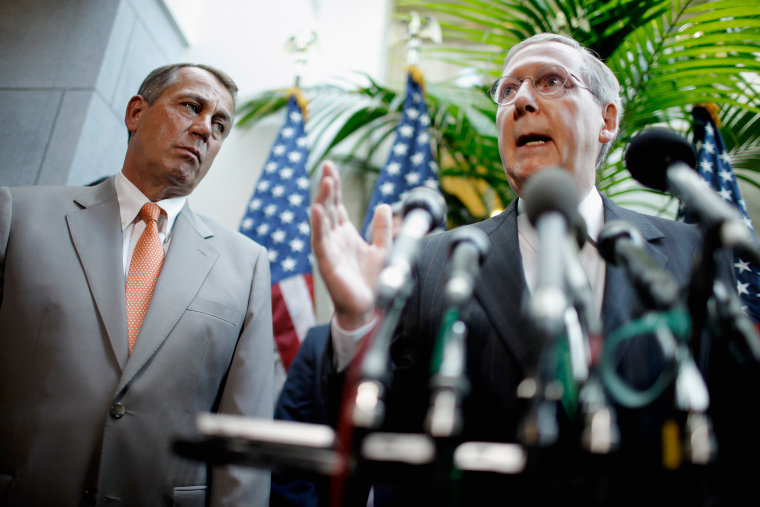There's no denying the electoral successes Republican candidates had in the 2014 midterms. Arguably the most significant change came in the Senate, where the GOP took control of the chamber for the first time since 2006, but up and down the ballot, Republicans won big.
With this in mind, as 2015 got underway, the conservative party had the wind at its back and was eager to show the American public that voters chose wisely in the elections. How's that working out so far?
New polling from the Pew Research Center has to be discouraging.
The Republican Party's image has grown more negative over the first half of this year. Currently, 32% have a favorable impression of the Republican Party, while 60% have an unfavorable view. Favorable views of the GOP have fallen nine percentage points since January. The Democratic Party continues to have mixed ratings (48% favorable, 47% unfavorable). The Democratic Party has often held an edge over the GOP in favorability in recent years, but its advantage had narrowed following the Republicans' midterm victory last fall. Today, the gap is as wide as it has been in more than two years.
The problem for Republicans isn't just the gap between the GOP and Democrats. The more pressing issue is the direction of public attitudes -- in early 2015, Republicans had a respectable-but-underwhelming 41% favorable rating. With GOP officials in control of Congress, most state legislatures, and most governors' offices, that same figure has dropped sharply to 32%.
And before Republican leaders say, "The public is souring on both parties," note that Democratic favorability has actually increased over the same period.
Looking at the breakdown over specific issues, party advantages are largely predictable -- Democrats have the edge on the environment, reproductive rights, education, and health care, while Republicans lead on guns and terrorism.
But one number above all should jump out at GOP leaders:
As has been the case over the past four years, the Republican Party is viewed as more extreme in its positions than the Democratic Party. Currently, 52% say the GOP is more extreme, compared with 35% who say this better describes the Democratic Party.
The perception, to be sure, is rooted in fact. Republican politics has been radicalized to a historic degree, a development that the electorate has apparently noticed.
But therein lies the contemporary challenge for the GOP: the party has no idea what to do to move closer to the American mainstream. If leaders move away from extremist elements in their party, they'll be replaced by their radical colleagues. If Republican policymakers abandon the far-right agenda, they'll lose in their next primary.
At the same time, however, GOP officials are currently in the process of asking Americans to give the party control of the White House, Senate, and House, effective January 2017. The more the U.S. majority considers the Republican Party "extreme," the more difficult it will be for voters to give the GOP that kind of power over the federal government.
